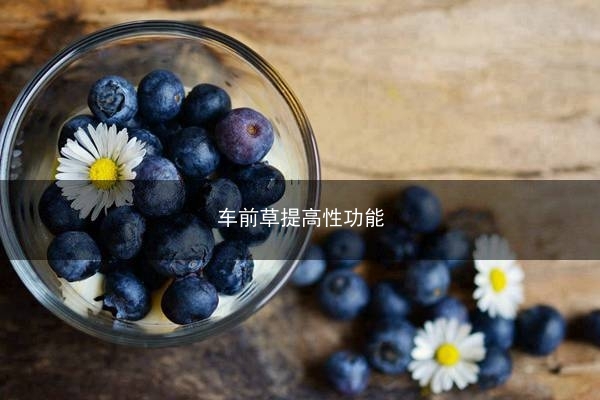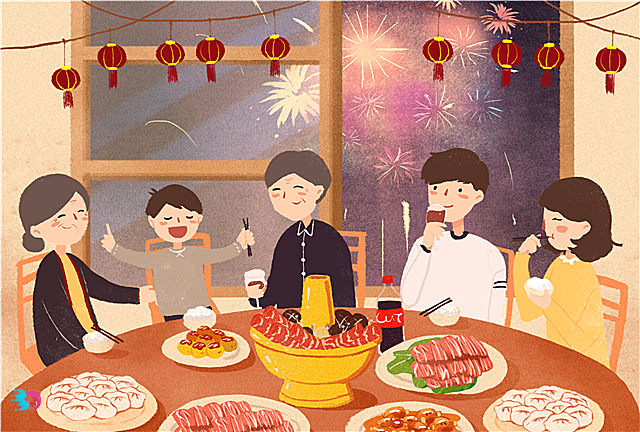小雏菊英文(小雏菊英文名怎么读)
「海伦多兰双语」10种鲜花的英文名含义,你最爱哪种花呢?
雏菊的英文名是daisy,但你知道它的含义吗?
Daisy来自于古英语短语dægesege,表示“日之眼”。因为雏菊黎明花开,黄昏花谢,好像生长于天地之间的眼睛一样。
康乃馨
Carnation [kɑː‘neɪʃ(ə)n]
There are two etymologies for carnation, a term found in English in the early 1500s。 According to one, carnation may be a corruption of coronation, perhaps because the flower‘s toothed petals resembled crowns or because the flowers were worn, crown-like, as garlands。
Carnation(康乃馨)在16世纪初期出现在英语中,关于carnation的词源有两种说法。其中一种说法认为,carnation可能是coronation(加冕礼)的变体,因为康乃馨的锯齿状花瓣好像皇冠,又或者是因为人们把这种花当花冠佩戴。
The second etymology comes from the flower‘s original color, and roots carnation in the Middle French carnation, “pink complexion”, from the Latin root caro, “flesh”, source of less delicate words like carnal and carnage。
第二种说法与康乃馨的原色有关,认为carnation这个名字来自中古法语carnation(粉红的肤色),这个单词的拉丁语词根是caro(肉体),与carnal(的)、carnage(大)等不太好听的单词词根相同。
菊花
Chrysanthemum [kri‘sænθəməm]
The word chrysanthemum, emerging in English in the late 1500s, comes from the Greek krysanthemon, meaning “gold flower”。 The first component, krysos (“gold”), shows up in the biological term chrysalis。
Chrysanthemum在16世纪末期传入英语,这个单词源于希腊语krysanthemon(金色的花朵)。第一个组成部分krysos意为“金色的”,是形容蝶蛹的生物学术语。
莫奈笔下的菊花
The second, anthos (“flower”), appears in anthology, literally “a collection of flowers”, first used for a compilation of small poems in the early 1600s。
Anthos表示“花朵”,它也是anthology的词根。Anthology意为 “鲜花大全”,在17世纪初期时,这个单词用来表示短诗集。
雏菊
Daisy
The word daisy has deep roots in the English language。 As attested to in some of English‘s earliest records, daisy comes from the Old English phrase dægesege: the “day’s eye”, as the flower‘s white petals close at dusk and open at dawn, like the eye of the day as it sleeps and wakes。
Daisy是一个地地道道的英语单词。根据一些英语相关的早期记载,Daisy来自于古英语短语dægesege,意思是“日之眼”。白色的雏菊黎明花开,黄昏花谢,就像是每一天的眼睛一样睡去醒来。
银莲花
Anemone [ə‘nemənɪ]
The anemone is also known as the windflower。 Indeed, the word anemone, first attested in English in the mid-1500s, probably comes from a Greek word literally meaning “daughter of the wind”。
Anemone(银莲花)也被称为风之花。事实上,anemone是在16世纪中叶首次出现在英语中的,它可能起源于一个希腊单词,意思是“风的女儿”。
It‘s said that the brightly colored petals of this flower only opened when the wind blew。 Sea anemones took their names in the late 1700s on their likeness to the flowers。
据说,明媚鲜艳的银莲花只有在风吹过时才会绽放。因为银莲花和海葵有几分相似,到18世纪末期时,人们将海葵(一种长在水中的食肉动物)称为sea anemone。
勿忘我
Forget-me-not
The name forget-me-not was a direct translation from the Old French ne m‘oubliez mye (“do not forget me”)。
勿忘我的英文名字forget-me-not直接翻译自古法语“ne m‘oubliez mye(勿忘我)”。
Renaissance romantics believed that, if they wore these soft-colored flowers, they would never be forgotten by their lovers, the flower a symbol of fidelity and everlasting love。
文艺复兴时期的浪漫主义者认为,如果他们戴上这种色彩柔和的花朵,就永远不会被爱人遗忘。勿忘我因此成为忠诚永恒爱情的象征。
兰花
Orchid [‘ɔːkɪd]
Orchids are a diverse family of extremely elegant flowers, but the literal meaning of their name, documented in English in the early 1840s, is a bit earthier, shall we say。
兰科植物(orchid)多种多样,都极为优雅,但是它们的名字直译过来却有点,怎么说呢,粗俗。据记载,兰花的英文名orchid出现在19世纪40年代。
Orchid comes from the Greek orkhis, meaning “testicle”。 The flower‘s bulbous roots, often paired, have long been thought to resemble those male organs。
Orchid来自希腊语orkhis,也就是“”的意思。由于兰花的球茎根通常是成对的,长期以来,人们一直认为其和男性相似。
牡丹
Peony [‘piəni]
The peony, a word found in Old English, was believed to have healing properties in early medicine, which is why its name might honor Paion, the physician of the gods in Greek mythology。
牡丹的英文名peony起源于古英语,在早期医学中,人们认为牡丹具有疗伤功效,因此,可能根据希腊神话中众神的医生Paion,将其命名为peony。
杜鹃
Rhododendron [,rəudə‘dendrən]
Like many other flower names, rhododendron enters the English record in the mid-1500s。 The name literally means “rose tree” in Greek。 It‘s an apt name, for this shrub or small tree blooms with brilliant, rose-colored flowers。
和其他众多鲜花名一样,rhododendron(杜鹃)是16世纪中叶传入英语中的。Rhododendron在希腊语中的意思是“玫瑰树”。这个名字非常贴切,因为这种像小树一样的灌木植物能开出鲜艳的玫瑰色花朵。
郁金香
Tulip
Passing into English via Dutch or German in the late 1500s, tulip actually comes from the Turkishtülbent, based on the Persian dulband: “turban”。
16世纪晚期,tulip(郁金香)从荷兰语或德语中传入英语,这个单词实际上源自于Turkishtülbent,后者来自于波斯语dulband,指“穆斯林的头巾”。
The flower, to its ancient namers, resembled the male headwear worn throughout the Middle East, India, and parts of Africa。
按照郁金香古代名字的意思,这种花好像中东、印度以及非洲部分地区男性的头饰。
紫罗兰
Violet
Before we had the color violet, recorded by the late 1300s, we had the flower violet, emerging some decades earlier in the same century。
据记载,在14世纪末期人们用violet表示紫罗兰色,而在此前几十年,violet就已经用来指代紫罗兰花了。
Violet grows out of the French violete or violette, a diminutive of viole, in turn the Latin viola, its name for this distinctively purple flower。
Violet来自于法语中的 violete或violette,它们是viole的指小词,而viole来自于拉丁语单词 viola,也就是拉丁语中对这种独特的紫色花朵的称呼。
This viola has no etymological relationship to the instrument。 Some scholars suspect Latin got viola from the Greek name for the plant, ion。
拉丁文viola(英语中有中提琴的意思)和中提琴毫无关系。一些学者认为,它来自于希腊语中对紫罗兰的称呼,ion。
这10种花你最喜欢哪种花呢?
海伦多兰英语不止是英语这么简单
10个关于黄色的单词,让你在赞美秋天时不再词穷
夏日的余热退场,凉爽的秋风如期而至。提到秋天,就想到金灿灿的麦田和枯黄的落叶。黄色是秋天的主色调,除了“yellow”,英语中还有许多表示黄色调的词汇。学习这10个关于黄色的单词,让你在赞美秋天时不再词穷。
[Photo/Pexels]
Saffron
橘黄色
Saffron is “a yellowish-orange color” that shares a name with the popular spice made from dried Crocus sativus. The color of saffron yellow is a warm, almost mustard hue of yellow that could be used to talk about the particular fiery yellow of a sunset or the rolling saffron hills during a summer in the countryside. Saffron was first recorded in English in the late 1100s. It derives from zaʿfarān, the Arabic word for saffron.Saffron是一种“橘黄色”,与干藏红花制成的香料同名。Saffron是一种温暖的、接近芥末色的黄色,可以用来形容日落时的赤黄色,或是夏天乡间漫山遍野起伏的藏红花。Saffron最早出现在12世纪末的英语中。它源自藏红花的阿拉伯语单词zaʿfarān。
Tawny
黄褐色
This shade of yellow comes to us from the tan family. Tawny means “a shade of brown tinged with yellow; dull yellowish brown.” It has been in use in English since at least 1350, it can be traced to the Middle French tané, a past participle of taner, or “to tan.” Tawny is used for things that have a dull yellow mixed with plenty of brown or tan, such as a tawny owl or the tawny crust of a fresh loaf of bread.这种黄调属于棕黄色系。Tawny的意思是“带黄色的棕色调;深黄棕色”。至少从1350年起,英语中就开始使用这个词,可以追溯到中世纪的法语词汇tané,是taner的过去分词。Tawny用来形容暗黄色与大量棕色或棕褐色混合的事物,比如一只黄褐色的猫头鹰或一块新鲜面包的黄褐色外皮。
[Photo/Pexels]
Lemon
柠檬黄
Lemon has been used to describe a certain shade of yellow since at least 1800. In fact, lemon is probably one of the first words that comes to mind when you think of the color yellow. Lemon yellow is “a clear, yellowish-green color,” much like the color of the fruit itself. Of course, lemons aren’t the only examples of lemon yellow. You could also use this one to talk about everything from sunflowers to taxis.至少从1800年起,lemon这个词就用来形容某种黄色。事实上,提起黄色时,你首先想到的词可能就是柠檬黄。柠檬黄是“一种清澈的黄绿色”,很像柠檬本身的颜色。当然,柠檬黄的代表不止有柠檬。你也可以用这个词来形容向日葵、出租车等。
Flaxen
亚麻色
You may have seen the word flaxen used in fairytales to describe the e’s flaxen hair. Flaxen means “of the pale yellowish color of dressed flax.” Flaxen is used to describe very pale, fair shades of yellow, which makes it an ideal choice for writers describing hair or clothing. It has been in use in English since the early 1500s.你可能在童话故事中见过这个词被用来描述女主人公淡黄色的头发。Flaxen意思是“亚麻淡黄色”。亚麻色用来描述非常淡的浅黄色,非常适合形容头发和衣服的颜色。这个单词从16世纪初就开始出现在英语中。
[Photo/Pexels]
Amber
琥珀色
You’re likely familiar with amber as fossilized tree resin. When we use amber to describe colors, that’s the color we’re talking about as well. Amber is defined as “the yellowish-brown color of resin.” Amber was first recorded in English in the late 1300s.你可能很熟悉amber(琥珀)这种树胶化石。当我们用amber来描述颜色时,也就是琥珀色。琥珀色指“树脂的黄棕色”。琥珀色在14世纪末首次出现在英语中。
Ocher
赭石色
Ocher, pronounced [ oh-ker ], isn’t only one color of yellow. It actually describes a range of colors of earthy pigments, “from pale yellow to orangish or reddish yellow.” It’s the yellow of certain spices, like turmeric, or the earthy, golden hue of sand. The first usage of ocher in English occurred in the mid to late 1300s, and it can be traced all the way back to the Greek ṓchrā, or “yellow.”Ocher(赭石色)发音为[oh-ker],不仅指一种黄色。实际上它描述的是一系列土色颜料的颜色,包括“淡黄色、橙黄或红黄色”。赭石色可以形容姜黄根粉等香料的黄色,或沙子的土黄调。14世纪中后期英语中首次使用ocher,这个词可以追溯到希腊语ṓchrā(黄色)。
Primrose
淡黄色
You might see this particular shade of yellow on a stroll through the garden. Primrose is a “pale yellow” named for the primrose flower family. The word comes from Medieval Latin prīma rosa, or “first rose,” and was first recorded in English in the late 1300s. Despite its pale hue, primrose has shades of white and bright yellow that make it the perfect word for describing light yellow fabrics, paints, or even the sky at first light.在花园里漫步时,你可能会看到这种特殊的黄色。Primrose是以报春花科命名的“淡黄色”。这个词来自中世纪拉丁语prīma rosa(第一朵玫瑰),在14世纪末首次出现在英语中。Primrose色调很浅,指白色和亮黄色的色调,非常适合形容浅黄色织物、颜料,甚至天刚亮的天空。
Canary
鲜黄色
Canary yellow is a “light, clear shade of yellow” like the color of yellow daisies. The word canary was first used to refer to colors as early as 1818.
鲜黄色是一种“浅浅的明黄色”,类似于黄色雏菊的颜色。早在1818年,Canary这个词就首次被用来指代颜色。
Citrine
水晶黄
This shade of yellow takes its name from a gemstone. It’s a variety of quartz, to be exact. A citrine yellow is “pale-yellow; lemon-colored.” In some cases, it may have a translucent quality, like that of a gemstone. You might use citrine to talk about the pale sunlight streaming through the window following a storm or even, perhaps, a cool glass of lemonade. 这种黄调颜色以宝石命名。确切地说,是各种各样的石英。 Citrine(水晶黄)指“淡黄色;柠檬色”。在某些情况下,它可能是半透明的,就像宝石一样。你可以用水晶黄来形容暴风雨过后从窗户射进来的淡淡的阳光,甚至可以用它来形容一杯冰凉的柠檬水。
Fallow
淡棕黄色
Fallow is a “pale-yellow or light-brown” color that you might see on fading leaves in the fall. It has warm tan and brown undertones that make it a perfect descriptor for things in nature. The word fallow also has a long history in English. It has been in use since before the year 1000, and it derives from the Old English fealu, or “yellow tending toward red, brown or gray.”
Fallow是一种“淡棕黄色”,你可能会在秋天的落叶上看到这种颜色。它的底色是温暖的棕褐色,非常适合形容自然界事物。Fallow这个词在英语中也有很长的历史。人们从公元1000年前就开始使用这个单词,它源自古英语fealu,表示“带有红色、棕色或灰调的黄色”。
来源:Thesaurus
来源:董静
来源:中国日报网
你知道小雏菊的寓意和花语吗?
小雏菊的花语是纯洁而美好的爱、天真快乐、幸福、希望、深埋在心底的爱等等。
它的寓意是指那些心中有暗恋的对象,但是由于不敢说出口,只能在心中埋藏的人。因此可以将雏菊送给自己喜欢的人,借此表露出心迹。
在罗马神话里,雏菊是森林中的妖精-贝尔蒂丝的化身花。因此雏菊还寓意快活,受到这种花祝福的人,可以过着像妖精一样,明朗、天真快活的人生。
小雏菊还寓意着离别,这种花在葬礼上常常能看到,可表达一种离别之情,以及对逝者的思念,怀恋之情。
小雏菊花型虽小,却有君子之风。 在绽放的瞬间非常美丽,给人以惊艳的感觉,因此寓意着坚
热门推荐
推荐阅读
热门标签
热门精选
- 06-231993年今年几岁(93年今年多少岁)
- 06-2912的寓意(十二有什么寓意)
- 06-30世界牌逆位(塔罗牌世界逆位寓意)
- 06-18八字子与寅(子丑寅卯是天干还是地支)
- 06-25力量逆位(塔罗牌力量逆位代表什么意思)
- 06-27黑色象征着什么(黑色代表什么意义和象征)
- 06-29官符(官符是什么意思)
- 06-18八字带右弼(右弼入命宫的人性格运势如何)
- 06-20羊倒八字角(八角亭代表什么生肖)
- 06-262026是什么年(2026是什么年庚)
名字配对最新文章



- 01-15小雏菊英文(小雏菊英文名怎么读)
- 01-15周文王神卦(周文王神卦抽签解签)
- 01-15观音灵签56(观音灵签56签解签详解)
- 01-15万年历2023(万年历2023年日历表)
- 01-15桦(桦树茸的功效与作用)
- 01-15教育机构起名(教育机构起名字大全免费)
- 01-15鬼谷子算命(鬼谷子算命免费 生辰八字)
- 01-15否卦(否卦详解)
- 01-15你你日(你你日子过得好是因为你有一个好老婆怎么回答)
- 01-15公司名称打分(公司名称打分测试打分1518)












